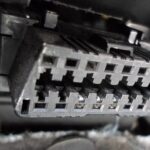The Subaru SRS (Supplemental Restraint System), which incorporates airbags and seatbelts, can have issues, but they can often be resolved by addressing the occupant detection system or related wiring, and used parts can be a cost-effective solution for resolution. CAR-TOOL.EDU.VN offers detailed information to help you troubleshoot and maintain these critical safety components and get the best service. Find assistance with auto repair questions and locating quality auto parts.
Contents
1. What Is the Subaru SRS System and Why Is It Important?
The Subaru SRS, or Supplemental Restraint System, is the safety system in your car that includes airbags, seatbelts, and related sensors. Safety is key, and the SRS is there to keep you safe in a crash by reducing injury risks. It is critical for ensuring passenger safety.
- Key components: The SRS includes airbags, seatbelts with pretensioners, crash sensors, and an SRS control unit.
- Functionality: This system detects collisions and deploys airbags while tightening seatbelts to protect occupants.
- Importance: Regular maintenance and prompt repairs of the SRS are vital for ensuring it functions correctly during an accident.
2. What Are the Common Problems Affecting Subaru SRS?
Subaru SRS issues often involve the occupant detection system, wiring problems, or airbag malfunctions. It’s important to keep an eye on these issues to ensure the safety of your vehicle. According to the National Highway Traffic Safety Administration (NHTSA), electrical issues are among the most common causes of airbag system failures.
- Occupant Detection System: The occupant detection system may fail, especially in models from 2014-2018. This can cause the airbag warning light to illuminate.
- Wiring Problems: Damaged or loose wiring connections can cause the SRS to malfunction.
- Airbag Malfunctions: Airbags may fail to deploy correctly due to sensor issues or internal component failures.

